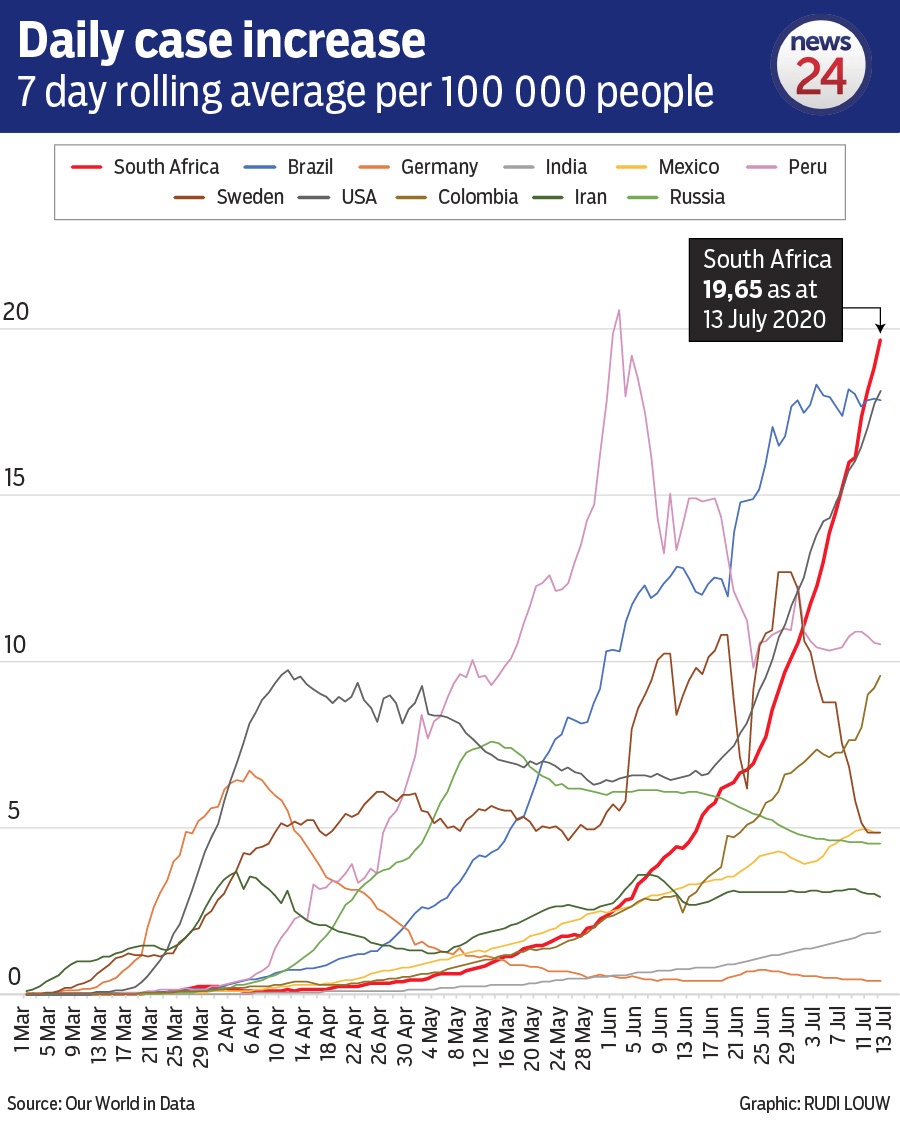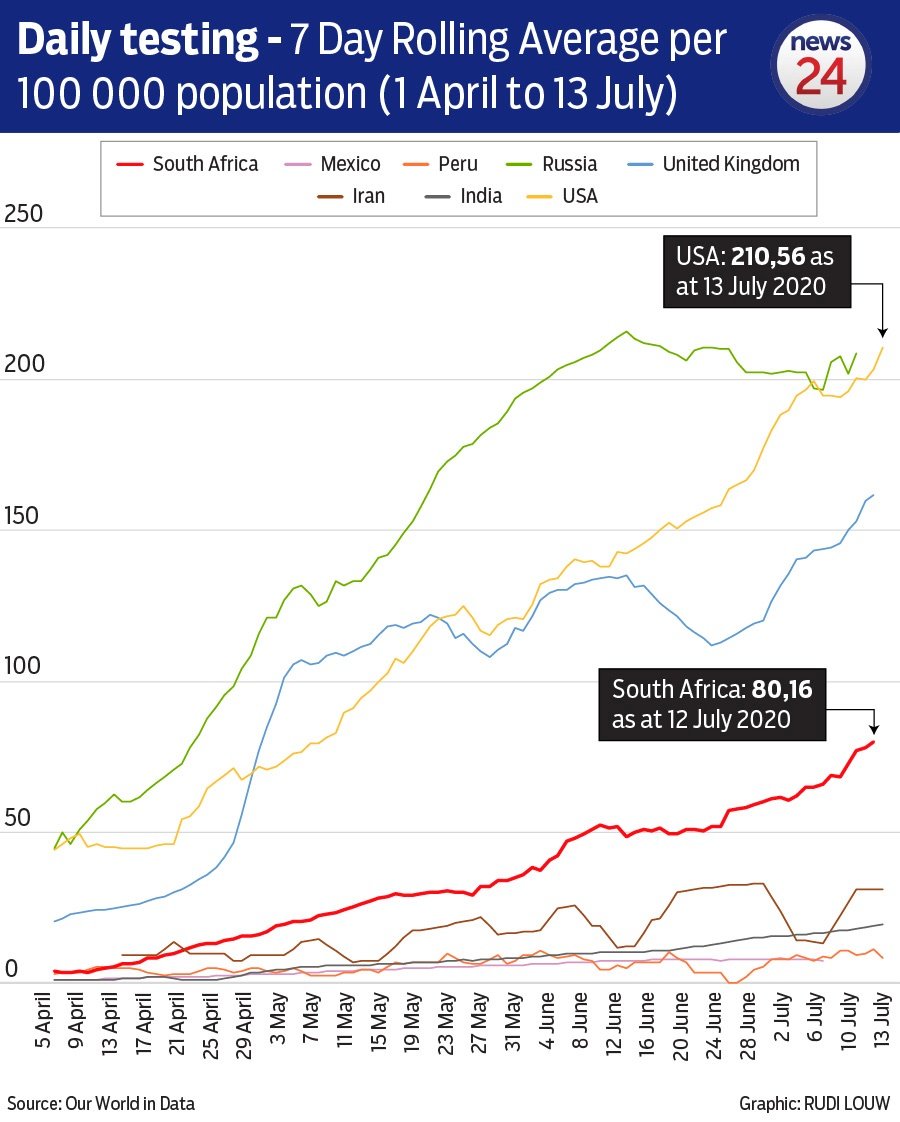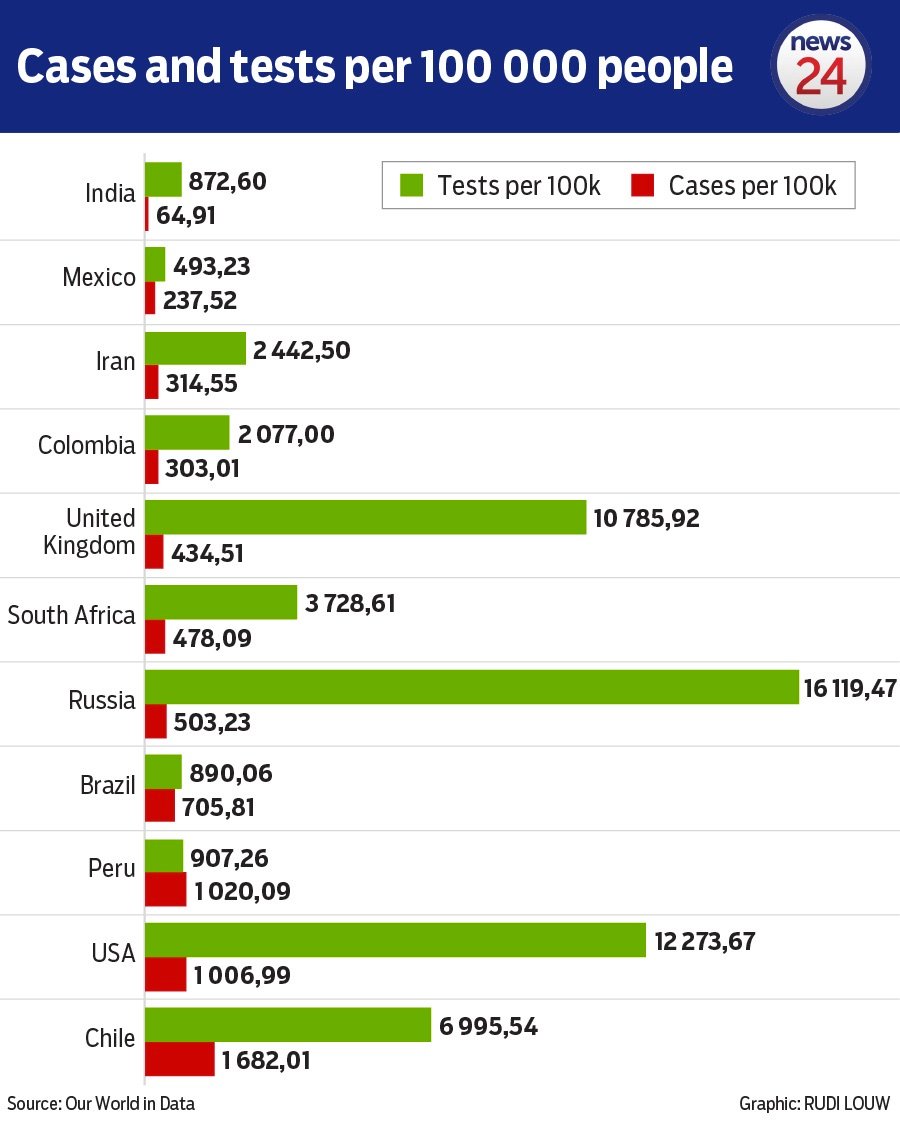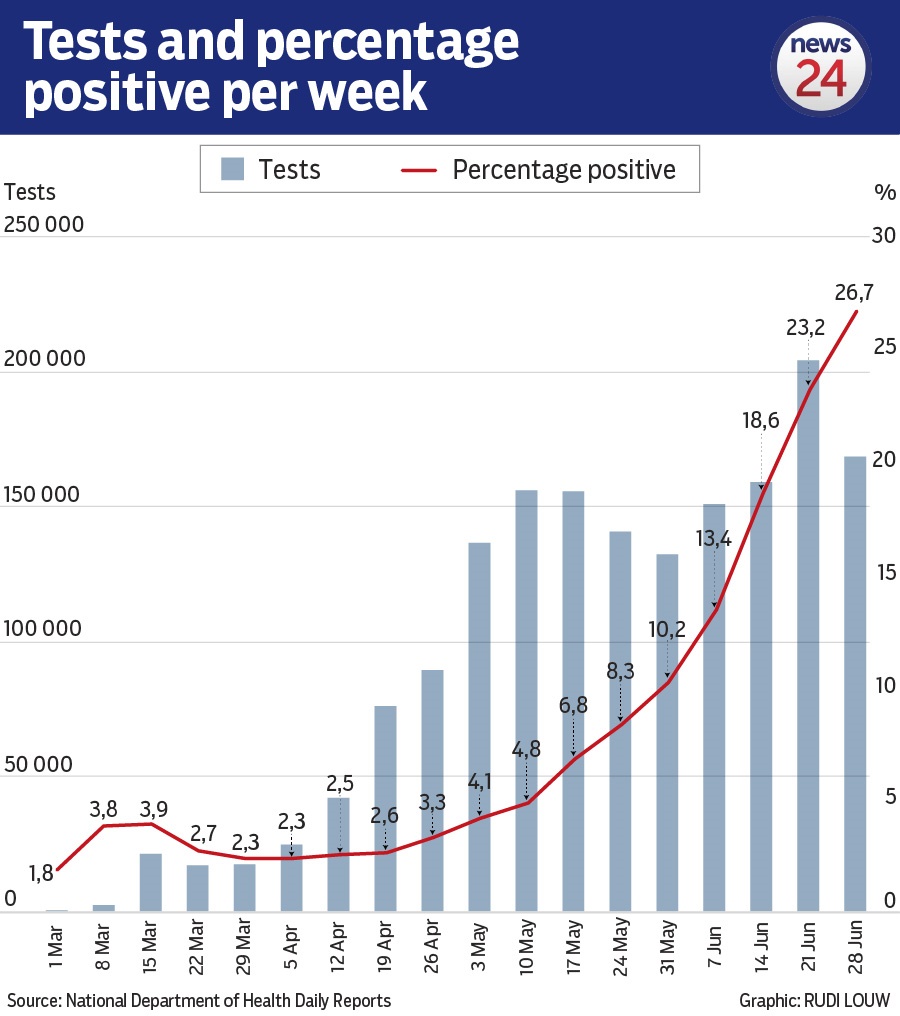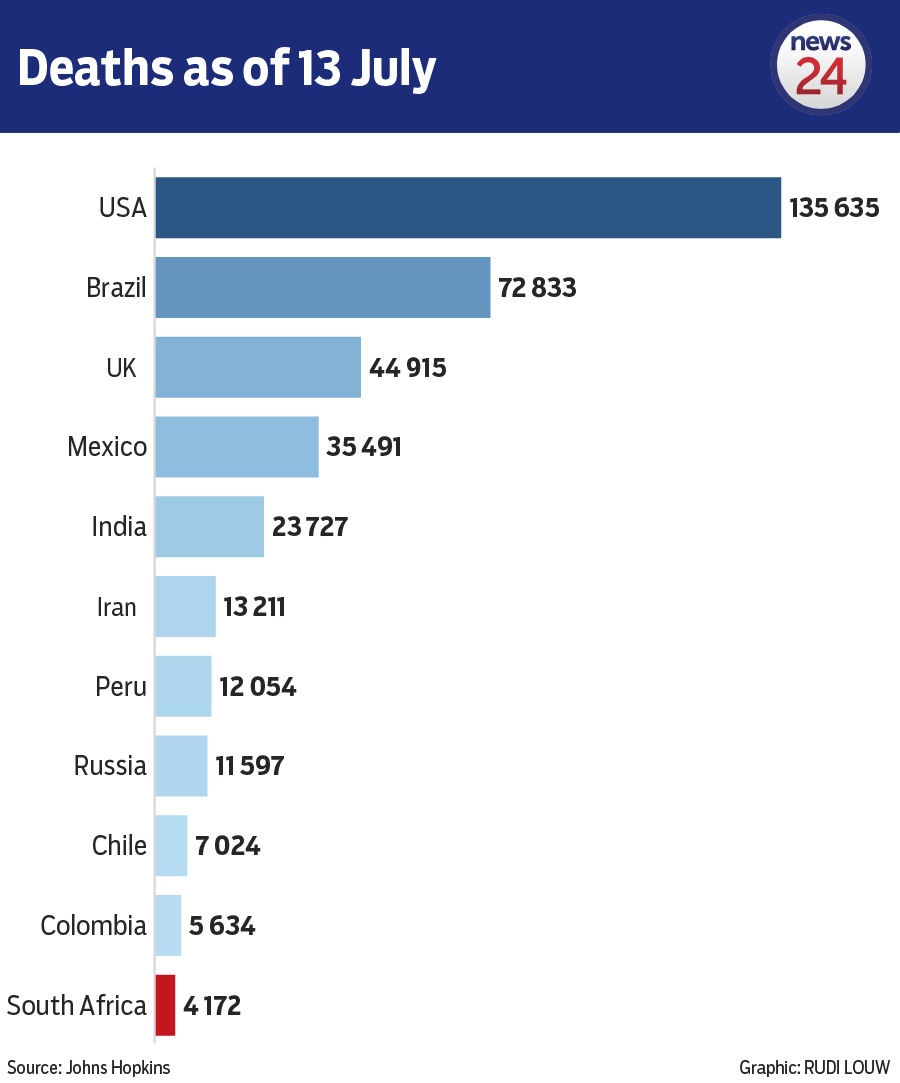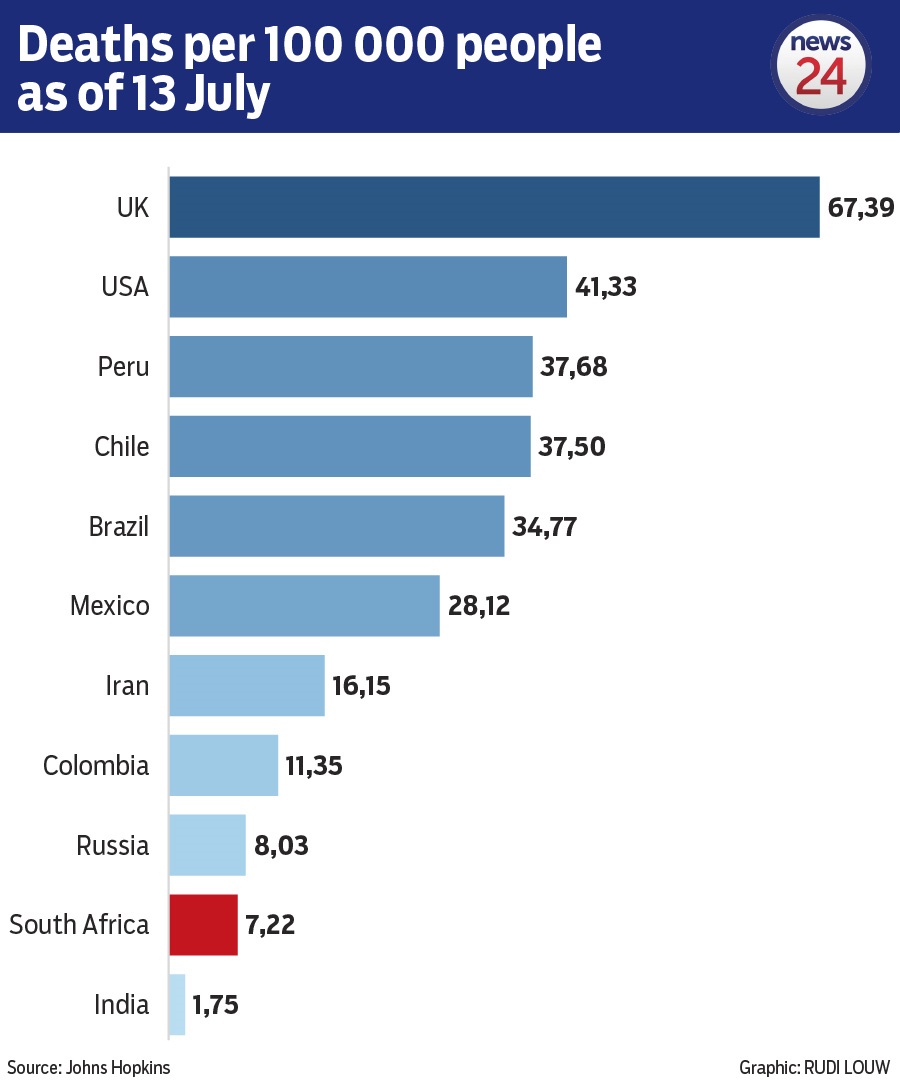-
Coronavirus cases in South Africa are growing at a higher rate than any other country in the world when compared by infections per 100 000 people.
-
As the global death toll continues to rise, SA’s Covid-19 mortality rate continues to be among the lowest in the world.
-
A lower testing rate and high growth rate mean SA could have a high number of cases going undetected until patients arrive at hospitals seeking care.
South Africa is now recording new coronavirus cases every day at a rate higher than any other country in the world when reported Covid-19 infections are compared by population size.
On average for the week of 6 to 13 July, the country recorded 19.6 cases per 100 000 people – a growth rate higher than every other country in the world currently.
The calculation is made by taking the daily case increases over time and finding the proportion per 100 000 people of the population these daily new cases represent. To make sense of this visually, this daily case increase per 100 000 people is then placed on a seven-day rolling average scale, as seen in the graph below.
It is clear from the graph that on this seven-day rolling average, only Peru has historically exceeded an average rise of more than 20 cases per 100 000 people a day. The daily increase rate in Peru, while still significant, has declined steeply in recent weeks when compared with other countries.
Comparatively, SA is testing at a lower rate than other countries – which gives rise to fears there are a high number of cases that remain undetected. When testing per day is mapped on a similar seven-day average of tests per 100 000 people, it is clear that testing in South Africa is outpacing many of the “top 10” countries with the highest cumulative infections, but lags behind countries that have found a similar number of cases, such as the United Kingdom.
On Tuesday, SA also overtook the UK in terms of cumulative confirmed Covid-19 cases with a reported 298 292 cases, which means it is now 8th in the world in terms of the most cases recorded over time.
As of Tuesday, UK health authorities reported 291 393 confirmed cases.
The surge in cases in SA in July has been driven by significant increases in cases in Gauteng, which became the first province to record more than 100 000 coronavirus cases at a case doubling rate hovering around 10 days, compared with more than 20 days in the Western Cape, where the majority of the country’s cases were initially found.
INFOGRAPHICS | Gauteng has done more Covid-19 tests than any province – is that why it has more cases?
Low testing numbers in SA mean a high number of cases could potentially be going undetected. As of Tuesday Health Minister Zweli Mkhize reported that 2.2 million tests had been conducted for Covid-19, translating into roughly 3 864 tests per 100 000 people – lower than Chile, the US, the UK and Russia.
As of Tuesday, SA had conducted 5 million tests less than the UK, but found more cases.
While the overall testing strategy for South Africa remains unclear, in June Mkhize confirmed to News24 that the country was moving toward a more targeted testing strategy which would focus on hospitalised patients and close contacts of confirmed cases, as well as healthcare workers.
This means that testing is not giving a clear picture of the actual spread of Covid-19, and scientists generally accept there is a high rate of underdetection of cases which is yet to be quantified.
